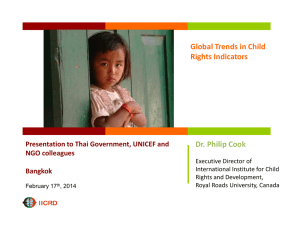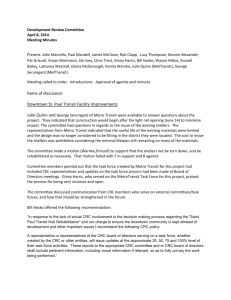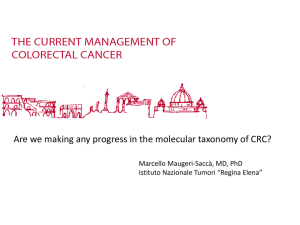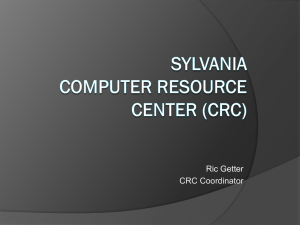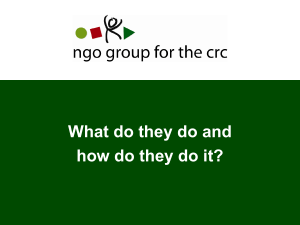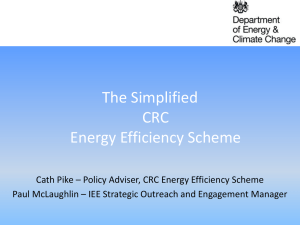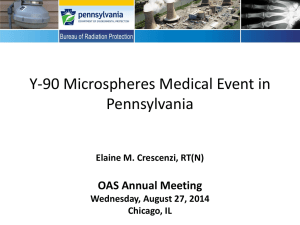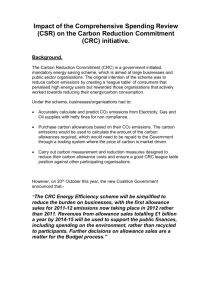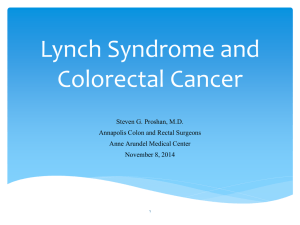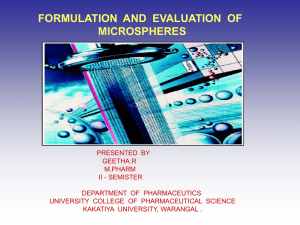TheraSphere Phase II trial results SIR 2011
advertisement
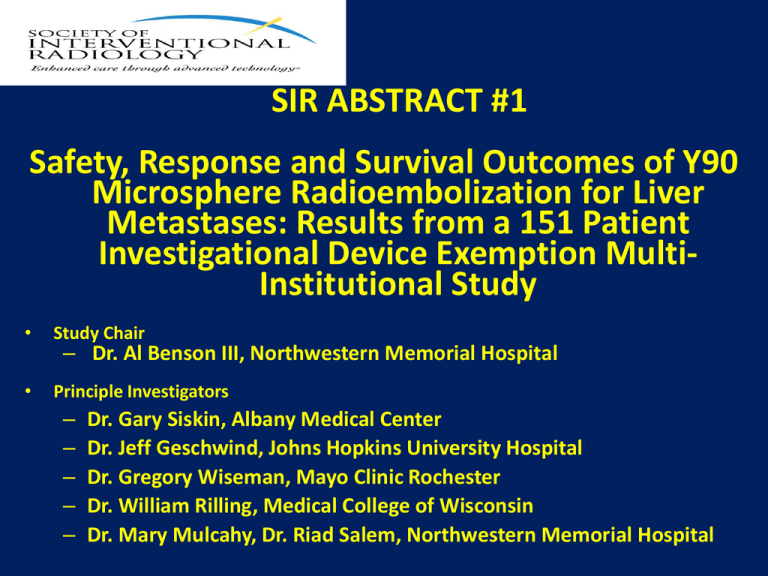
SIR ABSTRACT #1 Safety, Response and Survival Outcomes of Y90 Microsphere Radioembolization for Liver Metastases: Results from a 151 Patient Investigational Device Exemption MultiInstitutional Study • Study Chair • Principle Investigators – Dr. Al Benson III, Northwestern Memorial Hospital – – – – – Dr. Gary Siskin, Albany Medical Center Dr. Jeff Geschwind, Johns Hopkins University Hospital Dr. Gregory Wiseman, Mayo Clinic Rochester Dr. William Rilling, Medical College of Wisconsin Dr. Mary Mulcahy, Dr. Riad Salem, Northwestern Memorial Hospital TheraSphere • Y-90 integral constituent of the insoluble, biocompatible glass microspheres • Mean sphere diameter : 20-30 m • 22,000 to 73,000 spheres / mg • 6 dose sizes (3, 5, 7, 10, 15, 20 GBq) Comparison of a Human Hair with TheraSphere (500x) • Dose by selected target volume Activity = [Desired Dose (Gy)] [Mass of Liver Target (kg)] 50 • Arterial administration preferentially delivers microspheres to tumor; spares normal parenchyma TheraSphere Y-90 Glass microspheres Radiation Study Overview Design • Single-arm prospective, open-label • Investigational Device Exemption (Nordion) • Independent contract research organization • Patients with Liver Metastases: – Primary Colorectal Cancer (CRC) – Neuroendocrine (NE) – Non-Colorectal/Non-Neuroendocrine (Non-CRC/Non-NE) Objectives • Evaluate safety of TheraSphere at doses of 120 ± 10% Gy • Evaluate Imaging Outcomes (RECIST v1.0) – Response Rate (RR) – Progression Free Survival (PFS) – Independent central review • Evaluate Overall Survival (OS) Main Inclusion Criteria • ≥ 18 years of age • Metastatic disease refractory to, or inappropriate for other systemic or liver-directed therapies • Unresectable tumors • Measurable disease • Tumor replacement 50% by liver volume • ECOG PS 0-2 • ≥ 30 day from prior cancer therapy • Signed informed consent Main Exclusion Criteria • Risk of hepatic or renal failure – Serum creatinine >2.0 mg/dL, unless on dialysis – Serum bilirubin 2.0 mg/dL – Albumin < 2.0 g/dL – History of hepatic encephalopathy • Pulmonary insufficiency, clinically evident COPD • Contraindication to TheraSphere or radiology procedures • Cirrhosis or portal hypertension • Prior Y90 microspheres or EBRT to the liver • Intervention for, or compromise of the Ampulla of Vater • Clinically evident ascites • Co-morbidities or unresolved adverse events • Positive serum pregnancy test Trial Treatment Schedule • Pre-Treatment Procedures (< 28 days prior to Day 0) – Screening for eligibility, informed consent; medical history; labs; CT/MRI; 99TcMAA scan and hepatic angiography (coil embolization) – Develop treatment plan: determine target volume; activity to treat target volume; account for decay; schedule treatment, order dose vial • Day 0 - Treatment first lobe: position catheter, infuse microspheres • Week 2 – Telephone follow-up (safety) • Week 5 – Assess safety & response, treat 2nd lobe • Months 3, 6, 9, 12 then every 6 months – Assess safety & progression Study Enrollment CRC N=61 NE N = 44 Non CRC / Non NE N = 46 All Patients N = 151 N (%) N (%) N (%) N (%) Albany Medical Center 17 ( 27.9) 5 ( 11.4) 10 ( 21.7) 32 ( 21.2) Johns Hopkins 12 ( 19.7) 11 ( 25.0) 4 ( 8.7) 27 ( 17.9) Mayo Clinic 4 ( 6.6) 10 ( 22.7) 8 ( 17.4) 22 ( 14.6) Medical College Wisconsin 8 ( 13.1) 8 ( 18.2) 6 ( 13.0) 22 ( 14.6) Northwestern University 20 ( 32.8) 10 ( 22.7) 18 ( 39.1) 48 ( 31.8) Study Center • First patient enrolled: January 2007 • Last patient enrolled: October 2009 • Last patient visit: by March 1, 2011 Results – Patient Population • • • • • • • Mean age 63.7 years 55.6 % male 91.4 % Caucasian 95.4 % ECOG 0-1 68.9% bilobar disease Mean 2.5 years from initial diagnosis Medical history consistent with age/disease: – > 50% patients with histories in GI, Musculoskeletal, General Cardiac, Dermatology, Allergy/immunology & Endocrine body systems • Non CRC/Non NE included: cholangiocarcinoma, breast, ovarian, renal cell/bladder, esophageal/gastric, lung, pancreas Results – Prior Treatments CRC N = 61 NE N = 44 Non CRC/ Non-NE N = 46 2 or fewer therapies 43% 93% 59% 62% 3 or more therapies 57 % 7% 41% 38% Systemic Chemotherapy 100% 30% 70% 70% Hormone Therapy 0% 50% 20% 20% Other 30% 10% 20% 20% Prior Therapy All Patients N = 151 Results – Dosing • 243 lobar treatments per protocol • Average 1.6 treatments per patient • All patients received 120 Gy +/– 20% – No USNRC reportable medical events • Median cumulative lung exposure <10 Gy • 2% of patients received > 30 Gy to lung without clinical sequelae Results – Total Liver Dosing (Gy) CRC N = 61 NE N = 44 Non CRC/ NonNE N = 46 Mean (SD) 115.3 ( 7.62) 116.4 ( 7.79) 116.3 ( 7.11) 116.0 ( 7.48) Median (IQR) 114.3 ( 11.4) 115.0 ( 9.3) 116.1 ( 9.0) 115.0 ( 10.3) 100, 134 103, 138 97, 133 97, 138 Min, Max Mean (SD) Median (IQR) Min, Max All Patients N = 151 Site 1 Site 2 Site 3 Site 4 Site 5 112.2 ( 5.93) 116.3 ( 5.39) 117.3 ( 5.48) 120.2 ( 8.39) 111.7 ( 5.92) 111.7 ( 7.1) 117.4 ( 6.7) 116.7 ( 8.3) 119.6 ( 11.1) 110.7 ( 7.9) 102, 124 105, 126 108, 126 97, 138 104, 130 Study Analysis Populations • Safety and OS populations • all patients receiving TheraSphere (N = 151) • RR (CR+PR+SD) • patients with completed independent image review (N = 130) • PFS populations • CRC patients (N = 56), NE patients (N = 31) with complete independent image review 1 2 3 4&5 Response by RECIST v1.0 CRC N = 56 NE N = 31 Non CRC/Non-NE N = 43 All Patients N = 130 n (%) n (%) n (%) n (%) CR 0 ( 0.0) 0 ( 0.0) 0 ( 0.0) 0 ( 0.0) PR 5 ( 8.9) 4 ( 12.9) 3 ( 7.0) 12 ( 9.2) SD 30 ( 53.6) 24 ( 77.4) 24 ( 55.8) 78 ( 60.0) PD 21 ( 37.5) 3 ( 9.7) 16 ( 37.2) 40 ( 30.8) CR + PR + SD 35 (62.5) 28 (90.3) 27 (62.8) 90 (69.2) Response by RECIST Survival Estimates • CRC – Median PFS 2.8 months [95% CI: 1.2 - 3.1] – Median OS 9.4 months [95% CI: 6.6 - 11.9] • Neuroendocrine – Median PFS 14.6 months [95% CI: 9.0 - 18.4] – Median OS 24.0 months [95% CI: 17.5 - 36.3] K-M Estimate of Hepatic or Extra-Hepatic PFS Probability Kaplan-Meier Progression-Free Survival MONTHS K-M Estimate of Survival Probability Kaplan-Meier Overall Survival MONTHS Conclusions • TheraSphere demonstrated excellent tolerability and safety profile in patients with advanced metastatic liver disease • Highly reliable delivery of planned radiation dose • Prospective, multicenter confirmation of anti-tumor effect in patients without alternative therapeutic options • Results were reproducible among all centers; set the stage for international, multicenter phase 3 RCTs

